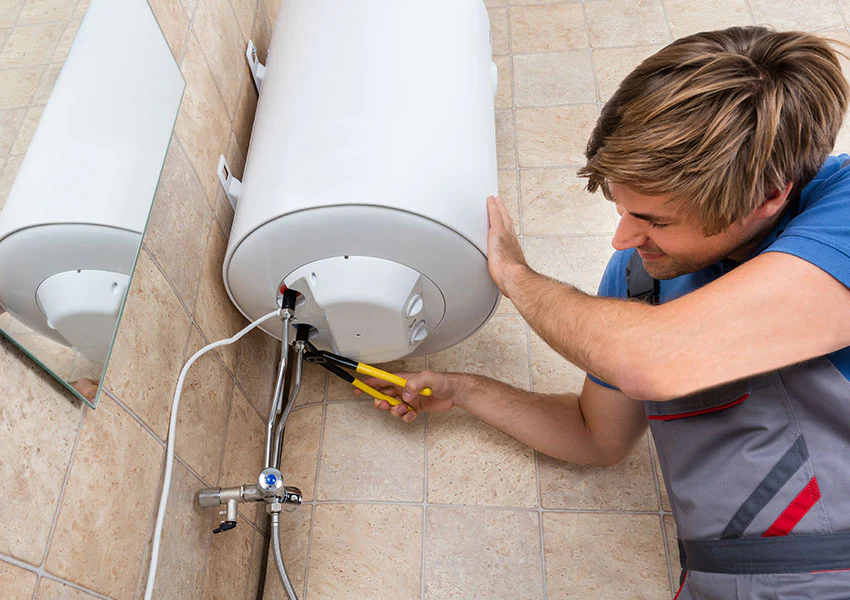How to Keep Your Home's Hot Water System in Good Condition
How to Keep Your Home's Hot Water System in Good Condition
Blog Article
We have stumbled on this article about How to Maintain Your Water Heater & Prolong its Life listed below on the internet and felt it made good sense to relate it with you on this page.

Warm water is vital for day-to-day convenience, whether it's for a refreshing shower or cleaning dishes. To guarantee your warm water system runs effectively and lasts much longer, regular maintenance is key. This post provides useful pointers and insights on exactly how to keep your home's hot water system to prevent disturbances and costly repair services.
Introduction
Preserving your home's warm water system could seem complicated, but with a few basic actions, you can ensure it operates efficiently for several years to come. This guide covers every little thing from understanding your hot water system to DIY upkeep pointers and knowing when to contact specialist aid.
Importance of Preserving Your Warm Water System
Normal upkeep not just extends the lifespan of your hot water system however additionally guarantees it operates successfully. Neglecting maintenance can result in reduced performance, greater power costs, and also early failing of the system.
Signs Your Hot Water System Needs Maintenance
Understanding when your hot water system needs attention can avoid significant problems. Look out for signs such as irregular water temperature level, weird noises from the heater, or rusty water.
Flushing the Water Heater
Purging your hot water heater gets rid of debris accumulation, enhancing effectiveness and extending its life.
Checking and Replacing Anode Rods
Anode rods prevent corrosion inside the tank. Inspecting and changing them when broken is critical.
Facility Problems Requiring Professional Help
Instances consist of significant leaks, electrical problems, or if your hot water heater is continually underperforming.
Regular Expert Maintenance Benefits
Specialist maintenance can consist of detailed assessments, tune-ups, and making certain conformity with safety criteria.
Examining and Changing Temperature Settings
Adjusting the temperature settings ensures optimum efficiency and safety and security.
Do It Yourself Tips for Maintenance
You can carry out several upkeep tasks yourself to maintain your hot water system in top condition.
Checking for Leaks
Consistently check pipelines and links for leaks, as these can cause water damages and greater bills.
Comprehending Your Hot Water System
Before diving right into maintenance jobs, it's practical to recognize the basic elements of your warm water system. Generally, this includes the hot water heater itself, pipelines, anode poles, and temperature controls.
Monthly Upkeep Tasks
Regular regular monthly checks can help capture minor concerns prior to they intensify.
Evaluating Stress Alleviation Valves
Evaluating the stress safety valve guarantees it functions properly and prevents too much stress buildup.
Insulating Pipes
Protecting warm water pipelines decreases warmth loss and can save energy.
When to Call a Specialist
While do it yourself maintenance is valuable, some problems need professional experience.
Conclusion
Regular maintenance of your home's warm water system is important for effectiveness, durability, and price savings. By complying with these pointers and knowing when to seek expert aid, you can ensure a reliable supply of warm water without unanticipated disruptions.
How to Maintain an Instant Hot Water Heater
Before tinkering with your hot water heater, make sure that it’s not powered on. You also have to turn off the main circuit breaker and shut off the main gas line to prevent accidents. Also turn off the water valves connected to your unit to prevent water from flowing into and out of the appliance. 2. When you’re done, you have to detach the purge valves’ caps. These look like the letter “T†and are situated on either side of the water valves. Doing so will release any pressure that has accumulated inside the valves while at the same time avoid hot water from shooting out and burning your skin. 3. When the purge valves’ caps are removed, you have to connect your hosing lines to the valves. Your unit should have come with three hoses but if it didn’t, you can purchase these things from any hardware or home repair shops. You can also get them from retail stores that sell water heating systems. Read the user’s manual and follow it to complete this task properly. When the hosing lines are connected, open the purge port’s valves. 4. You should never use harsh chemical cleaners or solutions when cleaning your unit. Make use of white vinegar instead. It should be undiluted and you’ll probably use about 2 gallons. 5. Now flush your water heater. This task should probably take about 40 minutes. We can’t give you specific directions for this because the procedure is carried out depending on the type, model and brand of your heater. With that being said, refer to the user’s manual. 6. When you’re done draining the unit, you have to turn off the purge port valves again. Remove the hosing lines that you earlier installed on each of the water valves. Put the valve caps (purge port) back in their respective places and be very careful so as not to damage the rubber discs that are found inside these caps. 7. Now that everything’s back in place, check your user’s manual again to find out how to reactivate your water heating system. 8. Once it is working, turn one of your hot water faucets on just to let air pass through the heater’s water supply pipes. Leave the tap on until water flows smoothly out of it. https://www.orrplumbing.com/blog/2014/september/how-to-maintain-an-instant-hot-water-heater/

I was introduced to that editorial about What Kind of Maintenance Do Water Heaters Need? through a good friend on another site. Do you know about somebody else who is inquisitive about the niche? Do not hesitate to promote it. I cherish your readership.
Schedule Services Report this page